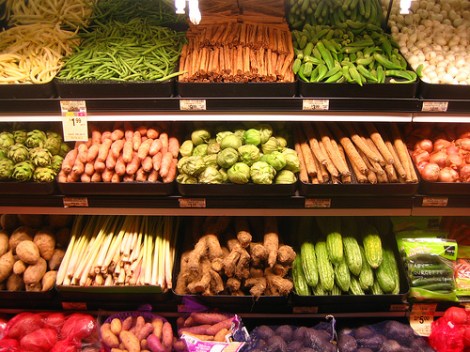Here’s one of those little changes that could make a huge difference: switching out old-fashioned bulbs for LEDs in supermarkets.
Usually, we’d tell you that the big impact here would be the energy saved. And that does happen. But also, by using LEDs, supermarkets can keep food fresh for longer.
It makes sense when you think about it: The light from a traditional incandescent bulb comes from a piece of metal, heated to such a high temperature that it glows. A byproduct of this process is, not surprisingly, heat. And when you put food near heat, it spoils more quickly.
LED manufacturers are making this case, but they’re not the only ones. The New Jersey Board of Public Utilities, for instance, calls making the switch a best practice [PDF]:
Whereas fluorescent lamps must be placed at the hinge of the door where the light is unevenly distributed the LEDs can be placed under shelves, for better distribution of light. The savings are not only in the light, but also because the reduced heat load makes the compressors run less often. Since they produce less heat, there is less spoilage and “burn” compared to other types of light.
Supermarkets are exactly the sort of institution that can and should be investing in LEDs: They’re going to save so much money over the long term running these lights and have less disgusting, spoiled meat to throw out. Points all around.




